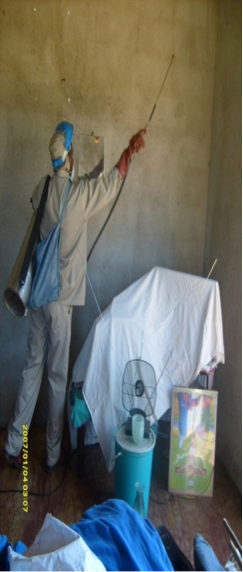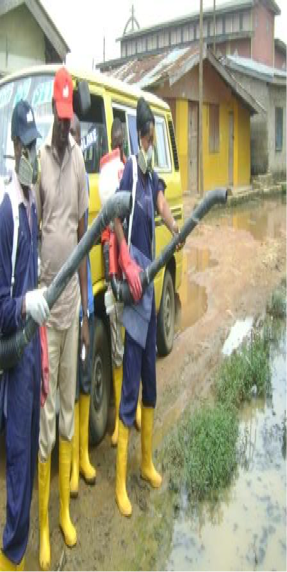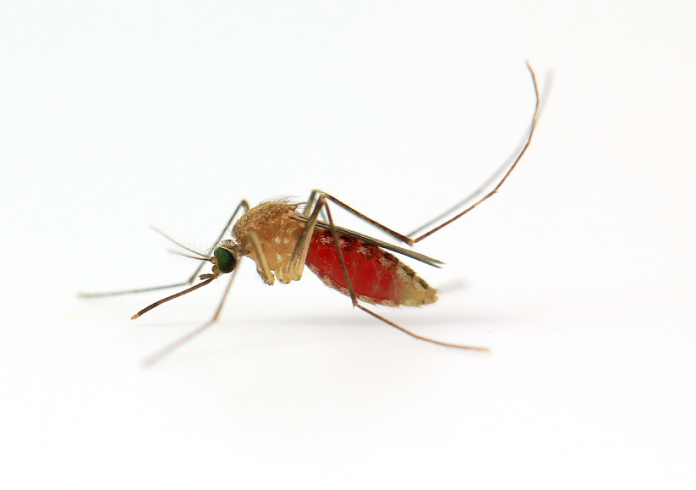Abstract:
Malaria is not considered as a serious and life threatening illness among many Nigerians. The disease can be very serious in children, pregnant women and in sickle cell disease patients. It is a common cause of convulsion and coma in young children. Severe malaria occurs when malaria cases are not recognized and treated early.
Malaria is preventable, treatable and curable. Most cases of malaria can be managed effectively at home if caregivers can recognize the symptoms early and start appropriate treatment within 24 hours of the onset of illness. The purpose of this article is to provide information on simple actionable prevention and control tips for malaria infection.
Article:
Background
Malaria control is one of the highest priorities on the international health agenda and Nigeria contributes the highest burden to the global malaria cases (WHO, 2014). Nigeria has witnessed a dramatic improvement in the provision of universal access to malaria prevention and treatment services. The use of Insecticide Treated Nets (ITNs) and Artemisinin-based Combination Therapies (ACTs) for the management of uncomplicated malaria cases has been especially effective. Since 2009, an estimated 58 million ITNs were distributed to populations at risk, through mass distribution campaigns to households and health facilities. Availability of ACTs increased with a total of 268.9 million doses provided between 2007 and 2013 (FMOH, 2012), especially through treatment of fever cases in public health facilities.
Since 2009, an estimated 58 million Insecticide Treated Nets were distributed to populations at risk
However, despite massive and wide coverage of these life-saving tools, the nationwide use of ITNs and uptake of effective malaria treatment with the use of ACTs remained low (2). In 2010, the World Health Organization updated the guidelines for malaria treatment and recommended that all suspected malaria cases must be confirmed by parasitological confirmation either by malaria rapid diagnostic test (RDTs) or by malaria microscopy (WHO, 2010). Despite wide dissemination of this guidelines and the provision of RDTs for use in private and public health facilities, continued treatment of malaria based on clinical suspicion continued to be a major concern (Ansah E at al, 2010; Leslie T et al, 2014).
In order to improve awareness and promote uptake of life saving malaria prevention tools, we put together this malaria prevention and control tips.
Causes of Malaria
Malaria is caused by bites of an infected type of a mosquito that carries a parasite and can transmit it from one person to the other. It is important to note that if one person in the house has malaria, the other household members (especially children) will develop the illness about 10-14 days later, if adequate prevention and treatment is not available.
Mosquitoes breed in stagnant water from drains, unused tires, cans, broken bottles and overgrown grasses. It usually feeds (i.e. bites) in the evenings and at night.
Prevention of Malaria
Prevention is the best approach to reduce malaria deaths. The following methods are recommended:
1. Sleeping inside an insecticide treated net every night. This is the most cost effective method. Since the ground breaking research of Bradley and Greenwood in the Gambia, which showed a significant inverse correlation between ITN usage and mortality, much hope has been placed on the use of ITN for malaria control (Bradley A & Greenwood A, 1995). A Cochrane review also conducted by Lengeler in 2004 summarized that there was an overall reduction of 17% in child mortality in association with ITNs use and also six lives were saved per year for every 1000 children protected. (Lengeler C, 2004). This overwhelming evidence of the efficacy of utilization of ITNs was the basis of its adoption as one of the key strategies for malaria control.
2. Indoor Residual Spraying of the inside of houses. This can be organized at community level usually by the representative of government.
3. Cleaning the environment regularly and making sure that drains flow continuously to avoid standing water.
4. Occasional spraying of aerosol insecticides. This is not very cost effective compared to other methods.
Other personal protective methods to reduce residual transmission of malaria include the following (WHO, 2014)
- Deter indoor entry by mosquitoes using physical screening barriers or repellents;
- Following entry, prevent indoor feeding of mosquitoes using exit or other barriers, repellents, or insecticides with no deterrent properties;
- Prevent feeding outdoors by using insecticide-treated clothing or repellents to directly protect people
Home management of Malaria (FMOH, 2011)
1. Recognize fever symptoms early.
2. Bring fever down immediately by:
» isolating the child and cooling him/her
» bathing the individual with lukewarm or tepid water or tepid sponging
» giving appropriate dose of paracetamol
» encourage liberal fluid intake
3. Give appropriate dose of Artemisinin Combination drugs. Note that the use of Artesunate Choloroquine and Sulphadoxine-Pyrimethamine tablets are not recommended. You can obtain the Artemisinin combination drugs from health centre and pharmacy shops. Check for the sign or logo of an olive coloured leaf as the sign of quality affordable anti-malaria drugs.
4. Complete the treatment dose even when the illness seems to have gone. Treatment is completed in 3 days.
5. Continue to feed and give oral fluids as requested
6. Observe the individual for danger signs like convulsion, vomiting everything, excessive weakness, refusing all foods, crying excessively and abnormal breathing
7. Take your child/adult to the nearest health centre immediately if you notice any danger sign or child is not responding to home treatment within 48 hours.
The key message is to recognize the illness early. Mothers need to be very observant and taking precautions within 24 hours of diagnosis is important. It is important to visit the nearest health center.
Pictures:


References:
- World Health Organization/Global Malaria Programme (2014). World Malaria Report 2014. WHO Press, Geneva.
- Federal Ministry of Health (2012). Report of Malaria Programme Review. National Malaria Control programme, Abuja, Nigeria.
- Federal Ministry of Health (2011). National guidelines for diagnosis and Treatment of Malaria, Fourth review. National Malaria Control programme, Abuja, Nigeria.
- Ansah E, Narh-Bana S, Epokor M, Akanpigbiam S, Quartey A et al (2010). Rapid testing for malaria in settings where microscopy is available and peripheral clinics where only presumptive treatment is available: a randomized controlled trial in Ghana. BMJ 2010, 340:c930. Accessed online via www.ncbi.nlm.nih.gov
- Leslie T, Mikhail A, Mayan I, Cundill B, Anwar M et al (2014). Rapid diagnostic tests to improve treatment of malaria and other febrile illnesses: patient randomized effectiveness trial in primary care clinics in Afghanistan. BMJ 2014, 348:g3730. Accessed online via www.ncbi.nih.gov/pubmed/24948695
- Bradley A. & Greenwood A. (1995). Bed nets (mosquito-nets) and morbidity from Malaria. The Lancet 1995 , 2:204-207
- Lengeler C (2004). Insecticide treated bed nets and curtains for preventing Malaria. Cochrane Database Systemic Review 2004:CD000363
- World Health Organization/Global Malaria Programme (2014). Control of residual malaria parasite transmission: guidance note. WHO Press, Geneva.
- Federal Ministry of Health (2011). National guidelines on Home management of Malaria. Abuja, Nigeria













Excellent article.
Thank you Raymond. The community needs simple actionable messages that will further help to reduce the malaria burden